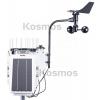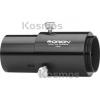Categories
- Agriculture 492
- Alarm Devices 1
- Chlorophyll Meters 10
- CO2 Meters 4
- Conductivity Meters 25
- Dataloggers 55
- Digital Microscopes 3
- Flow Meters 5
- Grain Moisture 7
- Hay Moisture 4
- Irrigation/Sprayer Meter 3
- Leaf Area & Photosynthesis 3
- Light Meters 21
- Meters (various) 4
- Nutrient Management 10
- Penetrometers 9
- pH Meters 20
- Refractometers 2
- Soil Compactation 4
- Soil Moisture 44
- Soil Samplers 4
- Temperature 10
- Turf Firmness Meter 1
- WatchDog WatchDog Sprayer Statio 3
- Water Quality 7
- Weather Stations 220
- Software 12
- Magnifiers / Microscopes 1
- Air Quality 5
- Astronomy 182
- Binoculars and Monoculars 17
- Dataloggers 56
- Magnifiers & Compasses 2
- Microscopes 9
- Panoramic Viewers 7
- SALE! 56
- Spotting Scopes 4
Manufacturers
Information
Share
0 items
Manufacturer Info
Bestsellers
- Silicon Pyranometer Sensor
- LightScout DLI 100 Greenhouse Light Meter
- LightScout DLI 100 Light Meter
- Quantum Light Sensor
- Quantum PAR Light Meter
- LightScout DLI 100 Greenhouse Light Meter (3 pack)
- LightScout Dual Solar/Electric Quantum Meter
- LightScout Foot-Candle Meter
- LightScout Quantum and Foot-Candle Meter
- LightScout UV Meter


